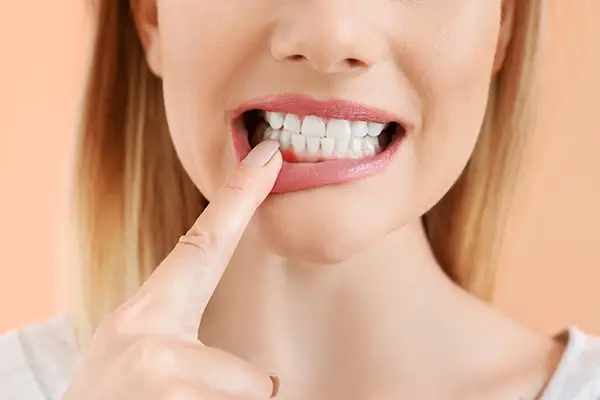Earliest Signs of Gum Disease to Watch For
Posted on 11/3/2025 by Riverwind Dental |
 Keeping your mouth healthy is about more than just avoiding cavities. Your gums play a crucial role in supporting your teeth and overall well-being. Gum disease, also known as periodontal disease, is a common condition that can lead to serious problems if left untreated. Recognizing the early signs is essential for maintaining healthy gums and preventing further complications. Let's explore what you should be looking for. Keeping your mouth healthy is about more than just avoiding cavities. Your gums play a crucial role in supporting your teeth and overall well-being. Gum disease, also known as periodontal disease, is a common condition that can lead to serious problems if left untreated. Recognizing the early signs is essential for maintaining healthy gums and preventing further complications. Let's explore what you should be looking for.
What is Gum Disease?
Gum disease is an infection of the tissues that hold your teeth in place. It starts with plaque, a sticky film of bacteria that constantly forms on your teeth. If plaque isn't removed through regular brushing and flossing, it can harden into tartar (calculus), which is much harder to remove. This buildup irritates the gums, leading to inflammation.
Early Warning Signs
The early stages of gum disease, called gingivitis, are often subtle. Here are some signs to be aware of:
| • |
Red, Swollen Gums: Healthy gums are typically pink and firm. If your gums are red, puffy, or swollen, it could be a sign of inflammation caused by bacteria. |
| • |
Bleeding Gums: Do your gums bleed when you brush or floss, even if you're gentle? This is a common sign of gingivitis. Healthy gums shouldn't bleed easily. |
| • |
Persistent Bad Breath: While occasional bad breath is normal, persistent bad breath that doesn't go away with brushing could indicate a buildup of bacteria associated with gum disease. |
| • |
Receding Gums: Have your teeth started to look longer? This could be a sign that your gums are pulling back (receding), exposing more of the tooth and root. |
| • |
Increased Sensitivity: If you experience sensitivity to hot or cold temperatures, especially near the gum line, it could be related to receding gums exposing the root surface. |
Why Early Detection Matters
Ignoring these early signs can lead to more advanced gum disease, called periodontitis. Periodontitis can damage the bone and tissues that support your teeth, eventually leading to tooth loss. Furthermore, research has linked gum disease to other health problems, such as heart disease, diabetes, and respiratory infections.
What You Can Do
Good oral care is the foundation of preventing and managing gum disease. Here are some essential steps:
| • |
Brush Regularly: Brush your teeth at least twice a day with fluoride toothpaste, making sure to clean all surfaces of your teeth and along the gum line. |
| • |
Floss Daily: Flossing removes plaque and food particles from between your teeth and under the gum line, areas that your toothbrush can't reach. |
| • |
Regular Dental Checkups: Visit your dentist regularly for checkups and professional cleanings. Your dentist can detect early signs of gum disease and provide appropriate treatment. |
| • |
Consider an Electric Toothbrush: An electric toothbrush with a rotating or oscillating head can often be more effective at removing plaque than a manual toothbrush. |
| • |
Use an Antibacterial Mouthwash: An antibacterial mouthwash can help kill bacteria in your mouth and reduce inflammation. |
What Happens if it Progresses
If gum disease advances to periodontitis, more extensive treatment may be necessary. This could include scaling and root planing (a deep cleaning procedure to remove plaque and tartar from below the gum line), antibiotics, or even surgery to repair damaged tissues and bone. In some cases, restoration dentistry might be needed to address tooth loss.
The Takeaway
Being proactive about your oral health is essential for preventing gum disease and maintaining a healthy smile. Pay attention to the early warning signs and take steps to improve your oral care routine. Regular dental visits are crucial for early detection and treatment. By working together with your dental professional, you can keep your gums healthy and protect your overall well-being. |
|